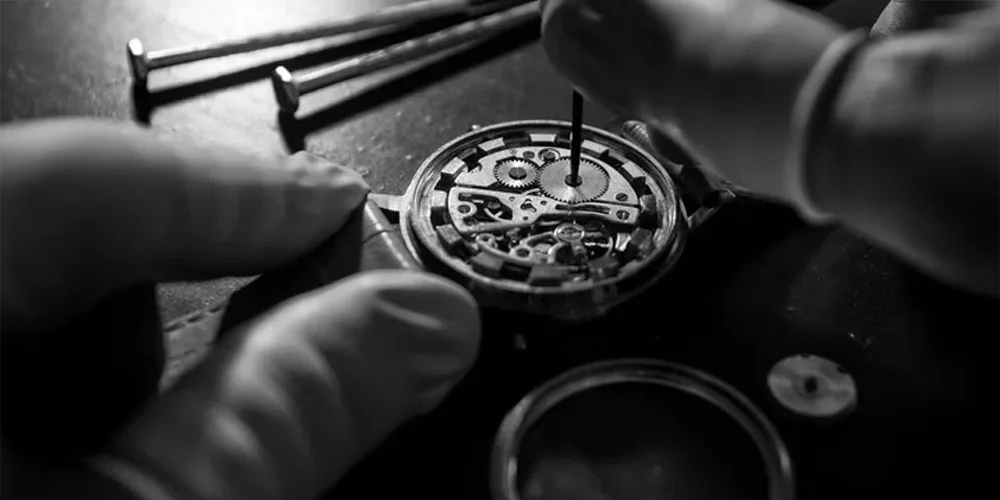Taking care of your mechanical watch is essential for maintaining its performance and longevity. Unlike digital watches, mechanical watches feature intricate moving parts that require regular maintenance. With proper care, your watch can remain accurate and stylish for years to come.
This guide provides detailed steps to ensure your mechanical watch stays in top condition. We’ll explore how to wind and set your watch, store it correctly, and address common issues. By following these guidelines, you can protect your investment and enjoy your timepiece for decades.
Understanding Mechanical Watches
What Are Mechanical Watches?
A mechanical watch operates through a system of springs and gears rather than a battery. These watches rely on motion to function, making them distinct from quartz watches. There are two types of mechanical watches:
- Manual Watches – Require daily hand-winding to maintain functionality.
- Automatic Watches – Wind themselves using a rotor that moves with the wearer’s wrist motion.
Both types need regular servicing to ensure accuracy and proper performance.
Difference Between Manual and Automatic Mechanical Watches
While both types operate without a battery, they differ in how they maintain power:
- Manual Watches: Need winding through the crown to store energy in the mainspring.
- Automatic Watches: Feature a rotor that moves with wrist motion, keeping the mainspring tensioned. If not worn for an extended period, they need manual winding or a watch winder.
Both types require routine maintenance, proper storage, and occasional servicing to maintain precision.
Importance of Maintaining Your Mechanical Watch
Proper maintenance ensures:
- Longevity – Regular servicing prevents wear and tear.
- Accuracy – Well-maintained watches keep better time.
- Preservation – Cleaning and storage prevent damage to delicate components.
Mechanical watches contain tiny gears and springs that need lubrication to function correctly. Over time, oils dry out, leading to increased friction and potential damage. Regular servicing ensures smooth operation.
Common Issues Faced by Mechanical Watches
Even with proper care, mechanical watches can develop problems over time. Here are some common issues and solutions:
- Running Too Fast or Slow – This could be due to magnetization or low power. Try demagnetizing or fully winding the watch.
- Watch Stopping Suddenly – Might need winding or cleaning. If the issue persists, consult a professional.
- Crown Not Working Properly – If it feels stiff or hard to turn, do not force it. A watchmaker can repair it.
- Moisture Inside the Watch – Water damage can ruin the movement. Dry it immediately and get it serviced.
- Strange Noises or Loose Parts – If you hear rattling, stop wearing the watch and have it checked by a professional.
Regular care and servicing will keep your mechanical watch running smoothly for years.
Daily Care and Handling of Your Mechanical Watch
How to Clean Your Watch at Home
Cleaning your watch regularly keeps it in pristine condition. Here’s how:
- Wipe it Down – Use a soft, dry cloth to remove dust and fingerprints.
- Brush the Strap – Use a soft brush to clean the strap, especially if it’s metal.
- Avoid Water – Unless your watch is water-resistant, keep it away from moisture.
Keep Your Watch Away from Water and Extreme Temperatures
- Water Damage: Even if water-resistant, avoid unnecessary exposure.
- Temperature Fluctuations: Extreme heat or cold can expand or contract internal components, affecting timekeeping accuracy.
Best Way to Store Your Watch
When not in use, store your watch properly to prevent damage:
- Use a Watch Box – Protects against dust and scratches.
- Keep It in a Dry Place – Prevents moisture damage.
- Use a Watch Winder – Essential for automatic watches to maintain accuracy.
Winding and Setting Your Mechanical Watch
Properly winding and setting your watch ensures accuracy and longevity.
How to Wind Your Watch
- Manual Watches – Turn the crown clockwise slowly until you feel resistance. Avoid overwinding.
- Automatic Watches – If not worn for a while, wind it manually a few turns before wearing.
How to Set the Time
- Pull the crown gently to the time-setting position.
- Turn it forward (clockwise) to set the time. Avoid turning it backward.
- Push the crown back to its original position.
Extra Tips
- Wind your watch at the same time daily.
- Never set the date between 9 PM and 3 AM to avoid damaging the date mechanism.
- Keep the watch away from strong magnetic fields.
Protecting Your Watch from External Factors
Avoid Magnetic Fields
Magnetic fields from electronic devices, speakers, and MRI machines can disrupt your watch’s accuracy. Store it away from such sources to prevent magnetization.
Protect from Extreme Temperatures
Avoid exposing your watch to direct sunlight, saunas, or extreme cold. Sudden temperature changes can affect the metal parts and impact timekeeping.
Avoid Impact and Shocks
Mechanical watches are delicate and should be handled with care. Avoid dropping or hitting them against hard surfaces to prevent internal damage.
Regular Servicing and Maintenance
Mechanical watches need servicing every 3-5 years to maintain performance. A professional watchmaker will:
- Clean internal parts.
- Lubricate gears and springs.
- Check for worn-out components.
Delaying servicing can lead to more costly repairs in the future.
Final Thoughts
A well-maintained mechanical watch is an investment that can last a lifetime. Whether you own a manual or automatic watch, proper care ensures it stays accurate and stylish.
Looking for a high-quality automatic mechanical watch? Explore Sylvi’s collection—designed for precision, elegance, and durability. Find the perfect timepiece for everyday wear or special occasions today!
By following these simple steps, you can keep your mechanical watch in pristine condition for years to come!



